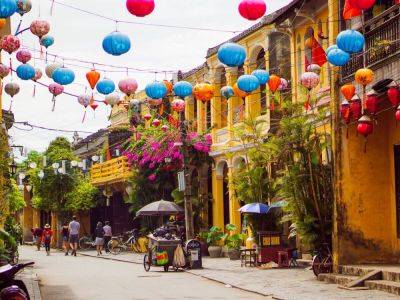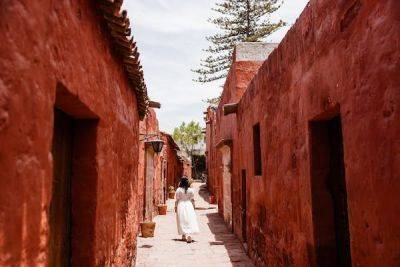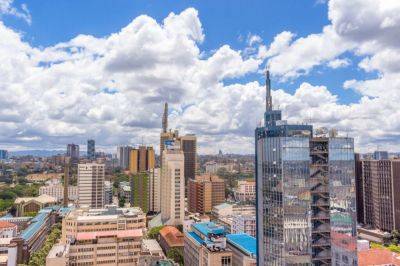Destinations worldwide have increasingly moved to lift visa requirements as part of their strategy to increase visitor numbers — visa processing delays are a major obstacle to the industry’s full recovery.
Long Visa Wait Times to Be U.S.’s ‘White Whale’ in 2024
29.11.2023 - 05:29 / skift.com / Geoff Freeman / Dawit Habtemariam / Julie Stufft / Long
Wait times for first-time visitor visas in Colombia, Mexico and India stretching to hundreds of days will continue to be a headache for the U.S. travel industry.
The reason? Demand for visas reached record highs in those countries, according to a media roundtable hosted by the State Department on Monday. The agency shared milestones, innovations and plans for the 2024 fiscal year.
Previously, the visa backlog had been driven by pent-up demand and staffing shortages at multiple U.S. embassies. Both were the result of the pandemic.
“When you see a 600-day wait time in a place like Bogota, when our counselor session there has done in some cases twice as many visas as they’ve ever done in some months, it’s really, a new signal of demand for travel that goes beyond sort of a hangover for Covid,” said Julie Stufft, deputy assistant secretary for visa services.
“These are places with traditionally high demand for U.S. visas, but nothing to the level that we’ve seen with these kind of four or five, 600-day wait times,” said Stufft.
Wait times were highest in Brazil, Mexico, Colombia and India — all top traveler markets for the U.S. In some embassies like Mumbai, visa wait times reached over two years earlier this year.
The wait times will cost the industry $12 billion in lost traveler spending this year, according to the U.S. Travel Association.
To cut the backlog the State Department had implemented a number of initiatives like waiving interview requirements; interviewing applicants on weekends; filling processing staff to their pre-pandemic level.
A record number of visas have been issued in some key markets like India. In Brazil, wait times “fell through the floor,” said Stufft.
But that hasn’t been enough to substantially reduce wait times in some countries. In Mumbai, the wait time is over 500 days, according to the State Department’s website.
“The assumption is that high production levels will ultimately bring down those wait times and I still think that’s true, but I think it’s less true than I thought a year ago,” said Stufft.
The State Department is focused on figuring out how to get these times down in 2024. “We can’t have a post that’s out there, what a four or 500-day wait time,” said Stufft. “That’s the white whale we need to tackle in these big places.”
In the meantime, many travelers in Colombia, Mexico and India will be deterred from coming to the U.S. “This is anything but a welcoming environment,” U.S. Travel CEO and President Geoff Freeman at Skift Global Forum in September. “If you are a leisure traveler or a business traveler, you’re likely to say, I’ll go somewhere else.”
While demand for tourist visas hit new highs in some countries, China’s a different story. Chinese demand for

A Magical Tour of Christmas Markets Along the Rhine
In Strasbourg, France, throughout the holiday season, Santa-capped teddy bears festoon a restaurant’s facade. Stuffed polar bears adorn another. In a Yuletide arms race, buildings are affixed with giant, gift-wrapped packages, glittering white deer and oversize gingerbread men. Turning the central medieval quarter into a Christmas maze, curtains of lights glow above cobblestone lanes lined with food and gift stalls. And in the central Place Kléber, lights on a nearly 100-foot-tall Christmas tree flash and glow, synchronized to carols.

How To Get the New 90-Day Vietnam Tourist Visa
Whether you’re daydreaming about navigating the glittering beehive of Ho Chi Minh City, criss-crossing the chaotic streets of Hanoi, or tanning on the beaches of Da Nang, you’ll eventually encounter the question of what documents you’ll need to travel to Vietnam.

How To Get a Visa To Visit Saudi Arabia and What To Do Once You Get There
In 2019, the Kingdom of Saudi Arabia officially opened its doors to international travelers, issuing tourist visas for the first time in history. Previously, only those traveling to Saudi Arabia for work or Muslim pilgrims were permitted to enter the country. Today, citizens of 57 nations, including the United States, can obtain an eVisa to travel to Saudi Arabia — and the application process is simple, fast, and relatively cheap.

What are the visa requirements for visiting Peru?
Home to one of the most-visited archaeological sites in the world, diverse ecosystems and a gastronomic scene that’s been booming for over a decade, it’s not difficult to come across a traveler with Peru on their bucket list — or one who has already crossed it off.

Kenya Will Be Visa-Free for Travelers From 2024
If you have your eyes set on island-hopping throughout the Lamu Archipelago or venturing on some of the most thrilling wildlife safaris in the New Year, we have good news for you: travel to Kenya is about to get a little bit easier.

The Revamped Cali Ski Pass Is Complete With New Features Including Lift Wait Times, Weather Forecasts, and More
The Cali Pass just got a major upgrade in time for ski and snowboard season.

Trip.com: Easy Visa Rules Would Lift Chinese Travel
The outbound travel recovery in China is stuck at just over half of 2019 levels, but there’s at least one promising sign of future demand: Domestic tourism is 90% above 2019 levels.

Kenya to Remove Visa Requirement for All Visitors
Visitors to Kenya will no longer need a visa to enter the East African nation starting in January, President William Ruto announced on Tuesday.

Unified Visas for Gulf Cooperation Council Would Supercharge Regional Tourism
The upcoming Gulf Cooperation Council unified visa, which would ease crossing borders like in the Schengen Zone, is forecast to supercharge inter-regional travel in the Gulf states, according to Ras Al Khaimah’s tourism boss.

New York City's Chinese Tourism Recovery to Lag in 2024
Chinese tourists won’t be coming back to New York City at their pre-pandemic levels next year. Affordability and limited flights are two issues holding back the rebound, say travel executives.

Do I need a visa to visit or work in Panama?
Panama is the perfect vacation destination for adventure lovers, culture and history buffs, and, naturally, beach bums – its biodiversity, rich coastlines and unfathomable islands have to be seen to be believed.
